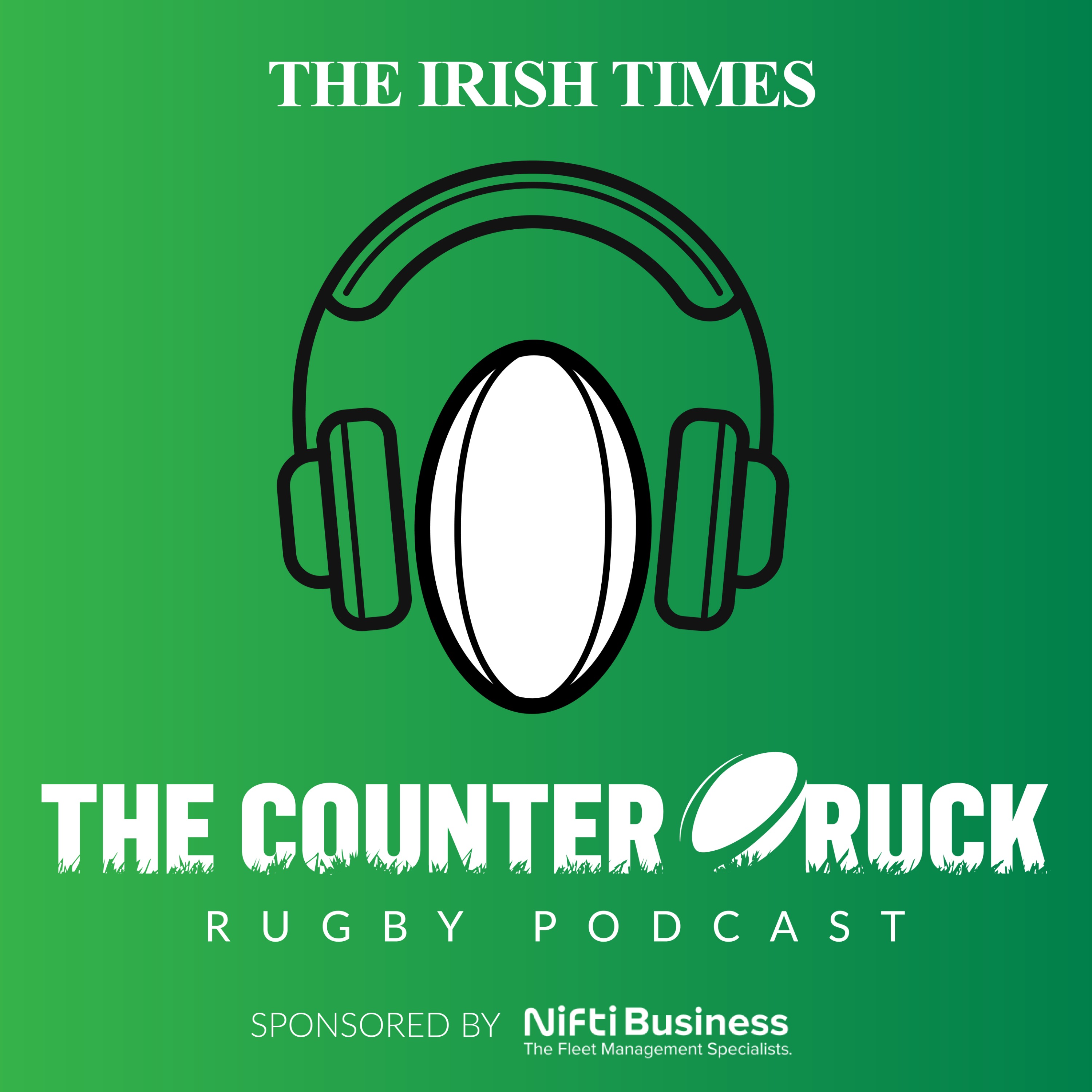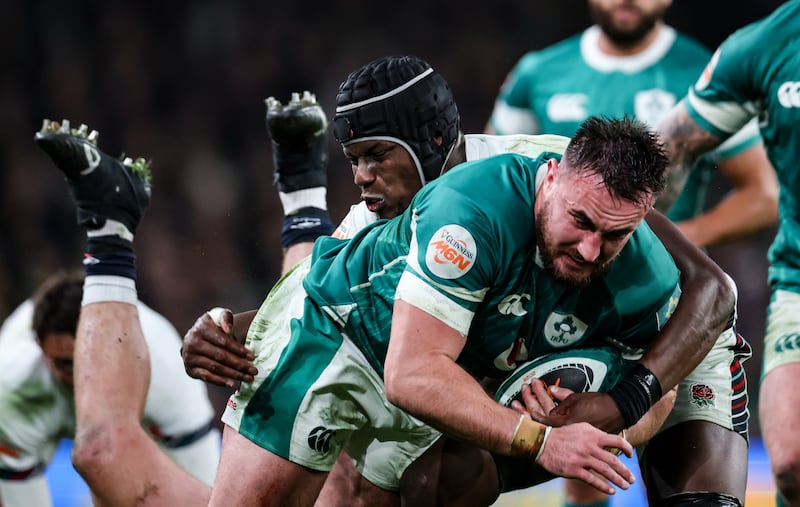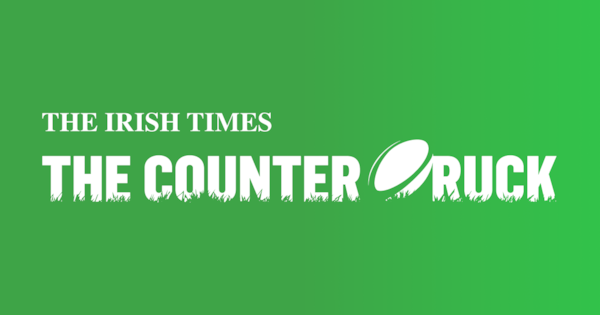Time for some malleable statistics. Ireland had 23 lineouts in Saturday’s 27-22 victory over England at the Aviva Stadium. The record will show that they didn’t lose a single throw, but it is just a tad misleading as they didn’t “win” two lineouts.
One of those instances led to Ireland taking the lead for the first time in the match through Sam Prendergast’s penalty. At that point starting hooker Rónan Kelleher and Ryan Baird, who called the Irish lineout for a perfect 14-0 return, had been replaced by Dan Sheehan and Jack Conan.
England only contested the Irish throw four times out of a possible 23, and this was one such occasion. Conan, who started at the front of the lineout, spun and headed for the back, the intended target. The ball sailed over the back but England captain Maro Itoje was adjudged by referee Ben O’Keeffe to have pushed Conan as the latter got airborne.

Are Ireland Six Nations favourites?
It was a gentle shove that ordinarily would not have been spotted or punished. Ireland’s attempted subterfuge in that lineout was comfortably the most complex set of dummy shapes they had attempted in the game and even without the nudge there was more than a hint of a missed lift on the part of the home eight.
RM Block
On the second occasion that Steve Borthwick’s side went after the Irish throw, English replacement Ollie Chessum won the touch, but the visitors were again pinged for transgressing, this time for closing the gap, which resulted in a free kick.
Borthwick had chosen to go into the game with a backrow that consisted of three “sevens” in the Curry twins Tom and Ben and number eight Ben Earl. Sacrificing height put pressure on Itoje and George Martin to be the primary ball winners. It’s not a surprise that two of the four lineouts England contested followed on from the arrival of Chessum and Chandler Cunningham-South as the latter became a frequent target on the English throw.
Baird won seven of Ireland’s tally, his replacement Conan, five, James Ryan and Tadhg Beirne three each, Andrew Porter (low throw to front), Hugo Keenan (from Mack Hansen’s quick throw) and Bundee Aki from a lob over the top. All bar one of the 21 that Ireland got hands to, so to speak, was on point.
Ireland’s lineout had been criticised during and after the Autumn Nations Series, fault-lines spread across several aspects of what is a unit skill. It’s a Catch-22 situation – when opponents sense a weakness they come crawling all over your throw.
England didn’t have their traditional size height-wise on Saturday but notwithstanding that limitation there was a slickness and tempo to Ireland’s lineout functionality. The home side took the ball where it was readily available initially, at two, and then used it off the top rather than maul. Baird’s delivery – his decision-making in the set-piece was excellent – to scrumhalf Jamison Gibson-Park was first class.
Ireland made good use of shortening the lineout, and after the departure of Kelleher and Baird the throwing areas and decisions remained broadly the same. The two players made important contributions while Sheehan, a try-scorer, and Conan, superb in his carrying game, made the desired impact.

A word on Kelleher’s performance. When Ireland were struggling in the first quarter of the game he was one of the new players in a green shirt who was more than a match for English players in terms of the physical collisions. He got his team over the gain-line on several occasions often in heavy traffic.
There were two obvious examples, when he carried straight through Itoje from a five-metre tap penalty, and in the second half bounced past Ellis Genge in a similar situation. But for some nefarious holding by a team-mate would have celebrated his ninth try in an Irish jersey.
Quite apart from his throwing there was a bustling purpose to his game, sharp in his work, including picking up a couple of loose balls and winning an aerial contest, while it’s his brilliant tackle on England wing Cadan Murley in a broken-field situation that snuffed out a potentially dangerous counterattack.
Sheehan and Conan both made a significant impact on their arrival, and in doing so built impressively on the platform laid by their predecessors in the game.
England threw into the lineout 15 times and while the official statistics list the fact that they only lost one, when Luke Cowan-Dickie overthrew it to Itoje – the loose ball was secured by Kelleher – they lost possession from a second. Itoje, under pressure from Ryan, got the touch, but Ireland tight head Finlay Bealham was through in a flash to grab the tap back.
Ireland contested eight of England’s first 12 lineouts, giving up possession without a challenge in the last three throws, which came in the final throes of the contest. The challenge for Ireland’s assistant coach Paul O’Connell and the players involved in this unit is to get better. They did that on Saturday.
Scotland with their taller timber – their lineout against Italy ran 13-0 – will pose a different examination, but the portents based on the first outing look reasonably good.




















